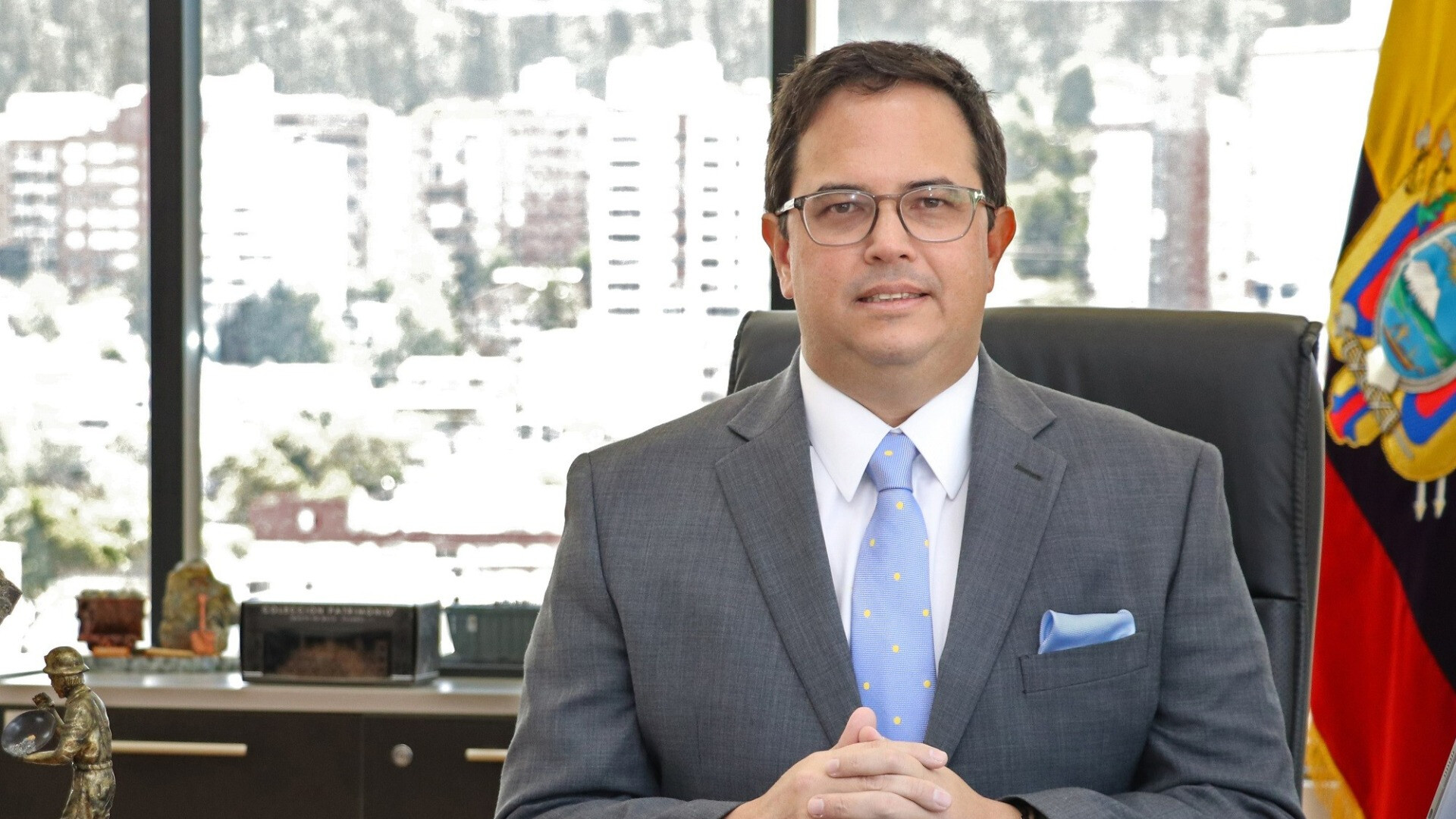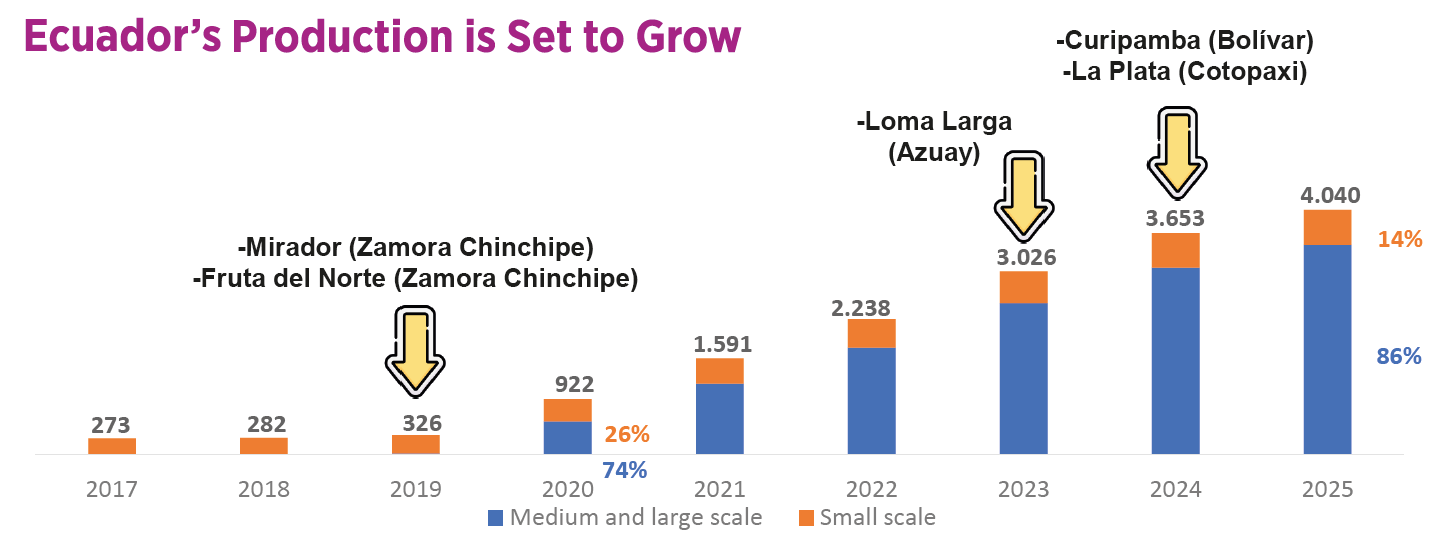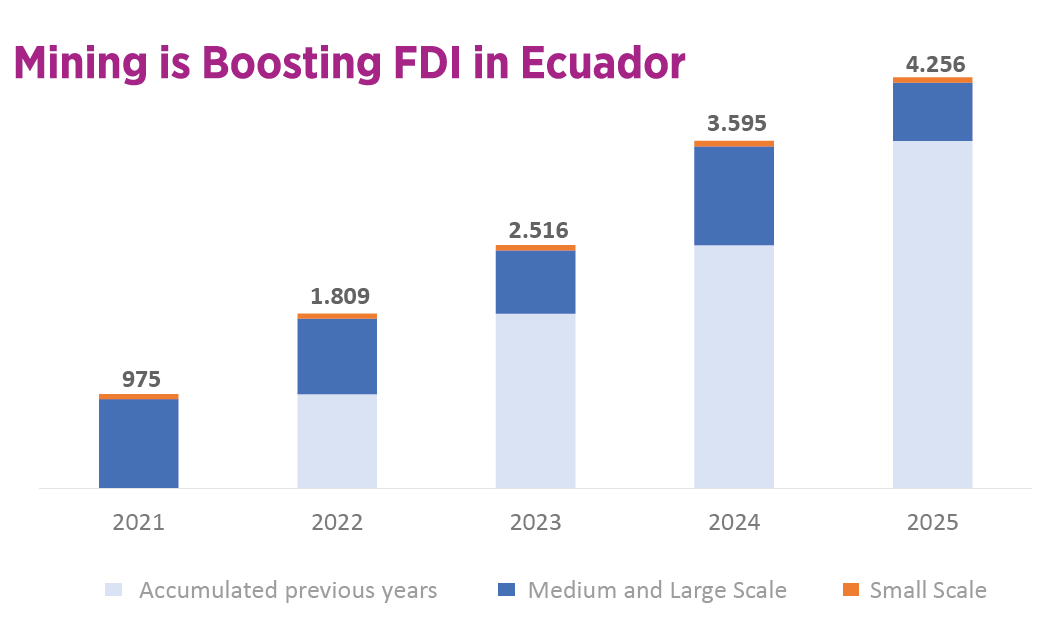Interview with Xavier Vera, Ecuador's Vice Minister of Mining
We sit down with Ecuador's Vice Minister of Mining to find out how the new government will improve regulations in one of the world's most exciting frontier mining jurisdictions...

LatAm INVESTOR: The president has promised to protect the environment while boosting mining; is that contradictory?
Vice Minister Vera: President Lasso is in favour of responsible mining that applies the best practices throughout exploration and production. Recently we saw the Ministry of Environment, Water and Ecological Transition, shut down some mining operations that were not following the environmental rules. I have no problem with that, because I only want mining that adheres to the best practices. If these miners can demonstrate that they have improved their operations they will be allowed resume mining. There is nothing contradictory in that. Indeed, we work closely with the Ministry for Environment. The president has made it clear that mining has a fundamental role as the driver of Ecuador’s economic growth, but that it mustn’t damage the environment. Presidential Decree 151, has 17 articles that specifically lay out the type of modern, responsible mining that we need.
LAI: Would you agree that most of the environmental problems are caused by small, local miners rather than large international players?
VMV: There are plenty of small, local miners that operate in a responsible way. However, I would agree that some don’t. One reason is that they don’t have access to the latest technology. There is also a cultural problem, where some local miners continue to mine in the way that their fathers or grandfathers did. But the main culprits are the illegal miners. They don’t have any permits; they operate outside the law and cause all sorts of environmental damage. So as a government we are encouraging the small, legal operators to improve their operations. Often adopting modern technology to reduce the environmental impact – for example by removing mercury from the mining process – also makes operations more profitable. We are engaging with these smaller players because that’s where most of the environmental damage is coming from. Also, we must recognise that some of these companies have been waiting for years for environmental permits that have been stuck in the Ministry of Environment. In this new administration, led by Presidente Guillermo Lasso, we are working transversally with the Ministry of the Environment, Water and Ecological Transition [MAATE by its Spanish acronym] to regulate pending environmental processes.
We are encouraging the small, legal miners to improve their operations...
We are working on a project with the Inter-American Development Bank (IDB) to strengthen the institutional capacity of the Ministry of Energy and Non-Renewable Natural Resources. In particular we need to improve our enforcement agency [ARC by its Spanish acronym], which was weakened by a cost-cutting merger in 2019. Within the public policy of the mining sector, as mentioned in the Presidential Decree 151, we are working on the institutional strengthening of the Vice ministry of mines and the Agency of Regulation and control [ARC by its Spanish acronym]. We are also working with the Ministry of Education and several international agencies to run programmes in schools that teach children the importance of mining in our modern world of cell phones and electric cars. We are also engaging with the small miners themselves. In this government we care about the entire mining sector; large medium, small and local (artisanal) miners.
LAI: Social opposition is the big challenge to developing mining in Ecuador; how will you reduce it?
VMV: First we need to create the judicial security, with the right laws and regulations, so that miners can be confident that there are clear and fair rules in place. Then we need to do a much better job of communicating the positive impact of mining. Previous governments have chosen to stay quiet about mining, perhaps because there were political hurdles in being too closely associated with the industry. We will work together, with the companies on a coherent communication plan. Indeed article 4 of Presidential Decree 151, specifically states the government must engage with Ecuadorians about mining.

One recent example was with Solaris Resources, a Canadian company that is developing the Warintza copper-gold project. We invited the company’s representatives and key leaders from the communities around the project to come into our Ministry for a discussion about the draft operating contract for artisanal and livelihood miners. By drafting that together, we hope to avoid protests later on in the development stage. It’s the first time that has happened in Ecuador, but we are the government of reunification and the best way to unify the country is through communication.
We are fortunate that in Fruta del Norte, we have a great case study of how responsible mining can benefit Ecuador. In one of the small towns next to the mine, the average monthly wage is at least 2 times the minimum salary in Ecuador, which is $450 per month. It’s great for us because on the news, people see reports of mining environmental damage but that is caused by the illegal players. Now we have a large-scale responsible mine demonstrating that mining can be positive.
LAI: Enami faces lots of criticism; should it be dissolved?
VMV: Enami’s existence is written into Ecuadorian law so we can’t just get rid of it. But we can reengineer the company to make it more transparent and efficient. This government proved with the vaccinations that we can improve the performance of the Ecuadorian state and we will do so with Enami. One complaint about the state-owned miner is that it gets preferential treatment for mining concessions. So, we would introduce a reform that creates a time limit, which means Enami can’t hold good concessions without developing them. We would like to change Enami’s financial structure so that it has more muscle and can generate more projects. Enami will look for strategic partners and be active across the whole industry from exploration to production.
LAI: The biggest issue in Ecuadorian mining is the cadastre; when will it reopen?
VMV: We are working on it. Really there are two elements we need to fix. The first is the system for managing mining concessions – which is the cadastre itself. The second is the regulatory environment in which the cadastre will operate. It closed in 2018 and has become a controversial issue in the sector. We have a project with the IBD to improve the system of mining management. We will be using cutting-edge technology to create a portal, that mining companies from around the world can access. There will be a module that allows us to administrate the concessions. We will also have control and monitoring capability, that will allow technicians to visit a concession in the field, use their tablets to record all of the vital details, sign it electronically and then send to the system using blockchain or similar to ensure the document can’t be altered. That will give confidence to the mining sector as it means the details of their concession can’t be modified, which is what happened previously.

We hope to have the cadastre open in 2022. But these changes that we are making are worthwhile because it will prevent legal disputes after concessions have been awarded.
LAI: Why should our readers invest in Ecuadorian mining?
VMV: We have outstanding geology. Take SolGold’s Cascabel project for example. The construction of the Alpala mine should begin in 2025 with production in 2028. Once operating, it will be one of the largest copper mines in the world. It has 21.6 million ounces of gold, 92 million ounces of silver and 9.5 million tonnes of copper, which is three times the size of our only operating large-scale copper mine El Mirador. Our incredible geology, coupled with a lack of historical exploration, means that you will see plenty more mega discoveries happening in the years to come. We have only just scratched the surface so far.
We also have great mining laws in Ecuador. While another advantage is the small size of the country, which means new mining projects don’t need large supporting infrastructure. We have the dollar, which gives investors visibility over long-term cost structures. Finally, there is an investor-friendly government, which has clearly laid out its mining policy in Presidential Decree 151.